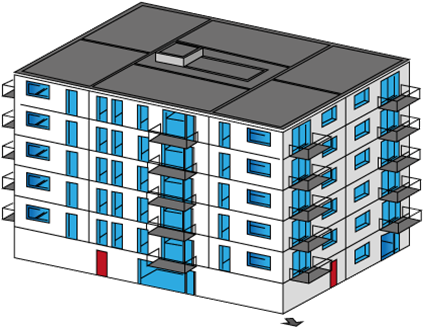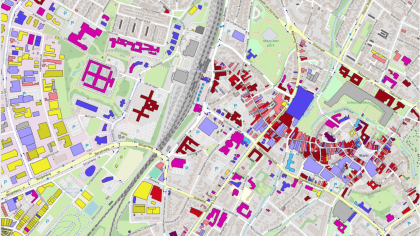Thermal insulation is a way to reduce the heat demand of a dwelling. Consequently this reduces the energy use related to space heating and improves thermal comfort. A good insulation level is also a requirement for a low temperature heating system. There are different insulation measures, different insulating materials and different layer thicknesses corresponding to different heat resistances/Rc-values in m2⋅K/W. This factsheet looks from an integrated modeling perspective to insulation. Based on a number of inputs, the factsheet presen ts costs, effect on heating demand (space heating only) and avoided CO2 emissions, associated with thermal insulation measures resulting in a specific label improvement. The figures in this factsheet are meant to model insulation on an aggregated level (the building stock).
Values on costs and savings are obtained from the TNO Variatietool (TNO, 2021). This tool comprises a dataset from the WoOn energy module that consists of socio-economic and energetic characteristics of a representative sample of approx. 4.500 dwellings in the Netherlands. The data contains different energy measures (insulation and/or installation measures, combined in packages) and associated costs and savings for these measures, resulting in different label improvements of these dwellings. The changes in energy use and energy labels are calculated by DGMR (more info in ‘Effect on Heat Demand’). For this factsheet, we relate the heat demand and costs to the change in energy label. (Looking to Rc-values of the specific measures is also possible but requires a more detailed approach.) Only label improvements that are realised by improving the thermal insulation are taken into account (label improvements can also be realised by improving the heating installation or solar PV, but these are out of scope). Moreover, an average investment and average heat demand reduction for dwellings that go from one specifc label (or label group) to a better label (or label group) is calculated. Types of thermal insulation measures that may be included in a label improvement are roof, wall, floor insulation and improvement of glazing. In most cases only a selection of these measures is needed to achieve a specific label improvement.
Note that for each part of the dwelling envelope, a variety of measures is possible in the Variatietool, for instance:
-
Wall insulation can relate to either cavity wall, panel or inner/outer wall insulation (whichever applicable)
-
Roof insulation can relate to either a sloping roof or a flat roof (whichever applicable)
-
Energy efficient glazing replaces either single or double glazing (whichever applicable).
Scope of this factsheet:
-
This factsheet considers only one housing type in the residential sector (see field ‘Subsector’). Category ‘apartments’ comprises buildings with several self-contained residential units. Residents generally occupy a single residential unit (‘a dwelling unit’) on a single story.
-
A change in space cooling demand due to insulation measures is not taken into account.
-
Although collective application of insulation by housing cooperatives (e.g. multiple dwellings in a single project) may reduce overall investment costs due to ‘scaling up’, this factsheet considers costs related to individual application. This also means further cost reductions are possible. More assumptions on costs can be found in the costs section.

Disclaimer: The Variatietool is based on a relatively large dataset in which data from WoON and DGMR calculations on the impacts of energy-related measures are combined. Care has been taken in the data preparation for the factsheet. Nevertheless, because of the selections on specific label improvements (through insulation measures only) for specific housing types, sometimes no homes (indicated as N/A) or only few homes (i.e. less than 50) remain in the data set (resulting in a low sample size N). This introduces some degree of uncertainty, for instance in the representativeness of average savings on heat demand for certain label improvements. It is recommended that the user of this data is careful when drawing general conclusions at the housing stock level.
All information in the datasheets is also available in ESDL (Energy System Description Language). You can find them in the Energy Data Repository (EDR).


